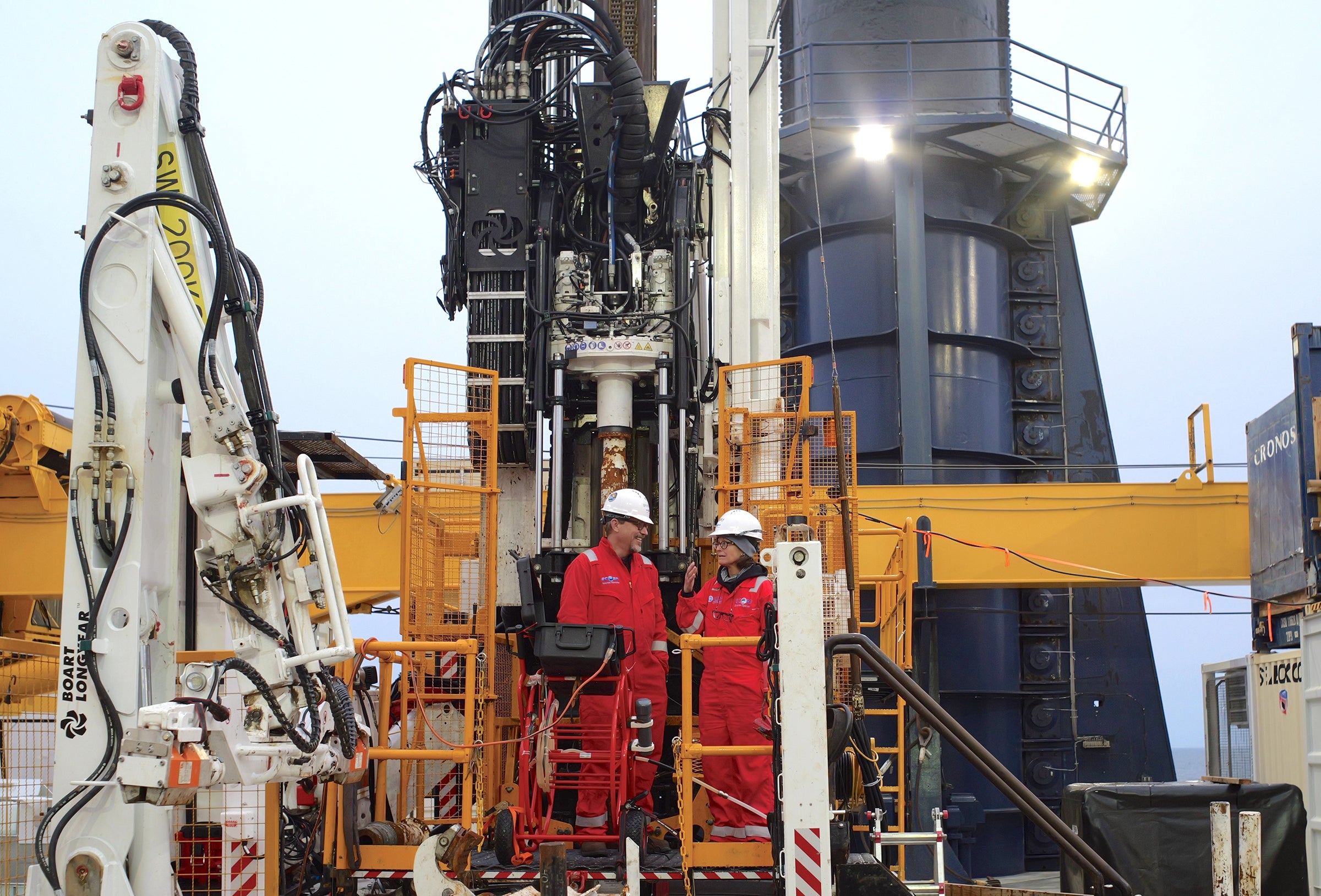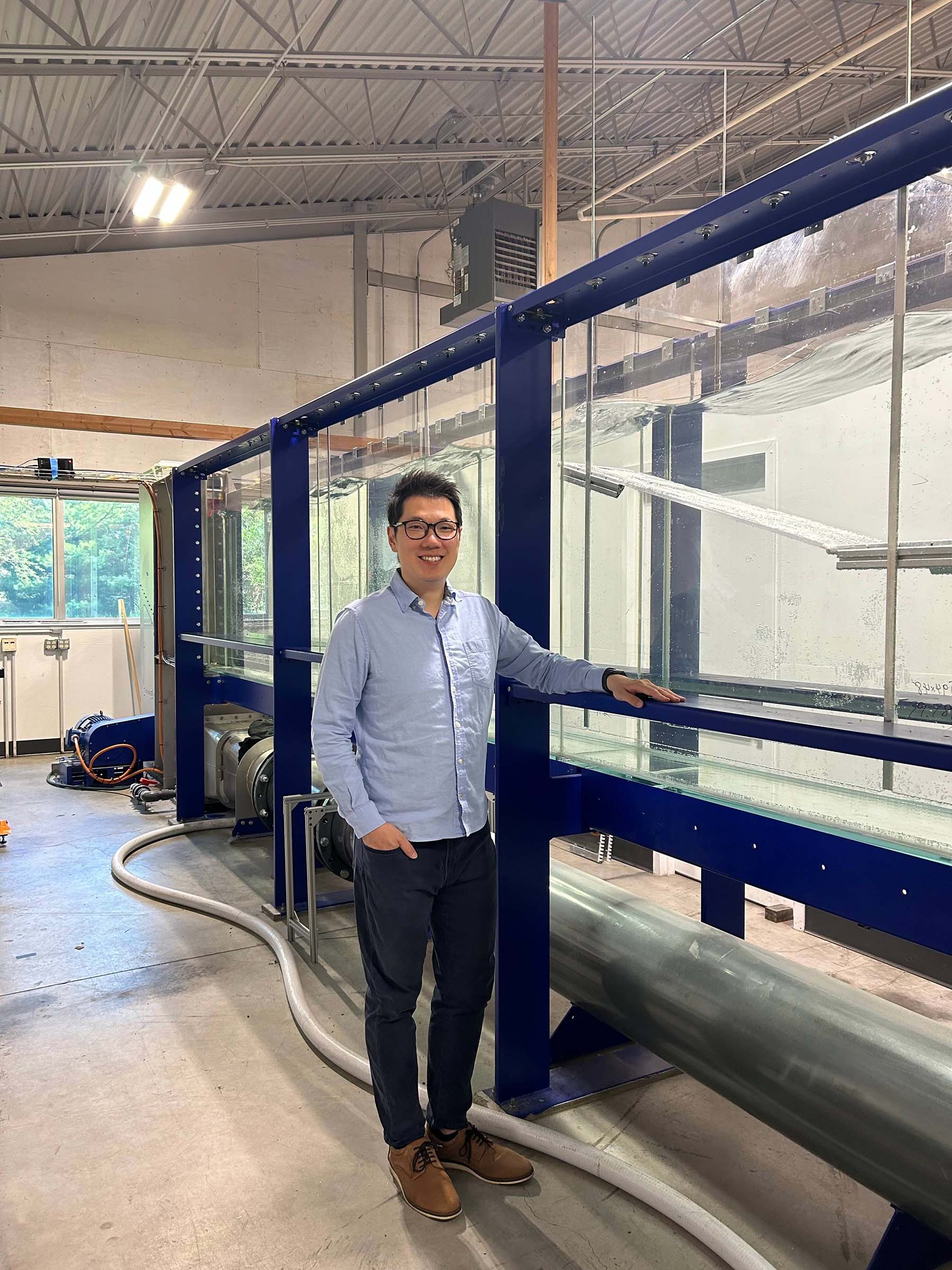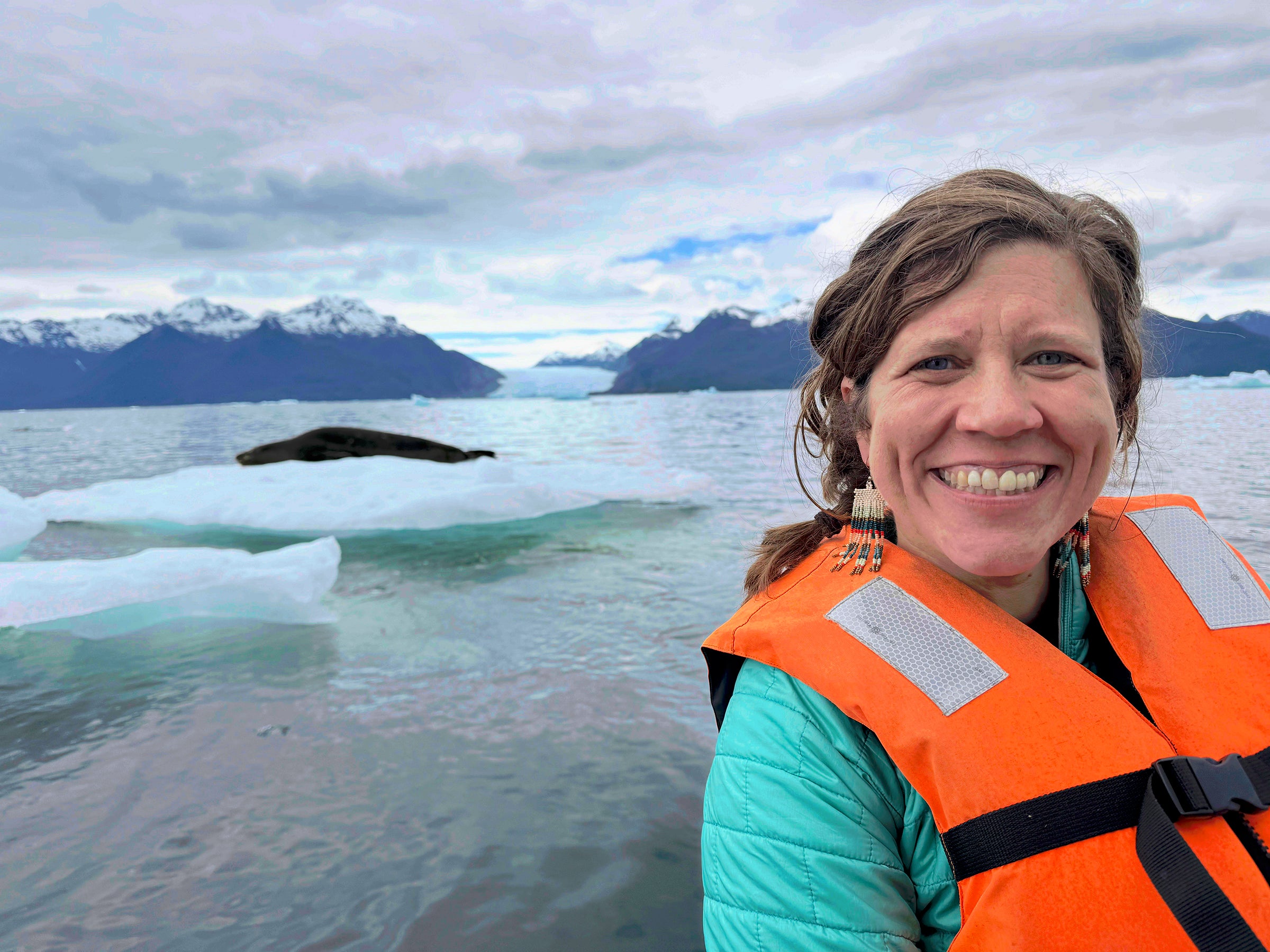How did freshened water end up beneath the seafloor? Sediment collected by scientists may reveal answers
KINGSTON, R.I. – Aug. 18, 2025 – How did freshened water end up beneath the New England Shelf miles offshore, how long has it been there, and how much of it exists?
Rebecca Robinson, a professor in the University of Rhode Island Graduate School of Oceanography, is attempting to answer those questions by studying samples collected from three sites off the coast of Nantucket.
Robinson was one of three chief scientists to lead a multi-national, multi-disciplinary team of 41 researchers on the New England Shelf Hydrogeology expedition. After 74 days offshore, the team returned in August with water and sediment samples—in the form of 718 cores measuring more than 871 total meters—to be analyzed in the researchers’ respective labs.

“Sampling of this offshore freshened groundwater to the extent that we can make comprehensive geochemical assessments of its history, including its age, is unprecedented in scientific ocean drilling,” said Robinson.
The salinity levels of sediments below the seafloor are typically close to those in the overlying ocean, yet offshore New England, the subseafloor contains an unusually large reservoir of freshened water.
“The sheer freshness of the water, which was close to drinking water limits, was a surprise to me,” said Robinson. “I didn’t think freshened meant to the level of oceanic salinities, but I also didn’t think it would be so close to what we get out of the taps.”
The expedition was organized by the European Consortium for Ocean Research Drilling as part of the International Ocean Drilling Programme (IODP³). Using a 185-foot-long liftboat equipped with a small drilling rig, 50,000 liters of water was pumped from several different depths.

“It was a challenge to pump significant amounts of groundwater out of the wells without destabilizing them,” said Robinson. “To prevent a column of sediment from collapsing, we had to be strategic about where we were pumping, the flow rate through the equipment, and where we placed our equipment. These were variables we learned to optimize.”
Robinson was pleased with the results of the drilling operation.
“I am thrilled with our success in sampling such difficult formations and with the astonishing amount of water we were able to recover for science,” said Robinson.
Robinson will study the origins and history of the nitrogen in the groundwater by examining the composition of the samples in her lab.
“We will study the nitrogen cycling of the water and how it is impacted by the freshened water,” said Robinson. “All organisms need nitrogen for life, so its cycling marks different types of microbial processing that occurs. Learning what happens along its flow path can tell us something about its history.”
Robinson will also measure the concentrations and the isotopic composition of nitrogen using an isotope ratio mass spectrometer. The age of the water will be measured by other researchers using radiogenic isotopes, such as carbon-14 and helium-4.
The other two chief scientists on the expedition were Professor Brandon Dugan of the Colorado School of Mines and Professor Karen Johannesson of the University of Massachusetts Boston. The full science team will convene at the University of Bremen’s core repository in Bremen, Germany in January and February 2026 to further examine the cores, collect more data, and write preliminary reports about the initial findings.
The cores will be archived and made accessible for further scientific research for the scientific community after a one year-moratorium period. All expedition data will be open access and resulting outcomes will be published.
The expedition was co-funded by IODP³ and the National Science Foundation.
Latest All News
- URI engineering professor awarded NSF grant to study nature-based answers to wave, current hazardsKINGSTON, R.I. – Aug. 19, 2025 – Rhode Island’s coastline is eroding by nearly two feet annually, with some areas more than double that, according to the Coastal Resources Management Council. Rhode Island’s shoreline loss is especially profound in high-energy wave areas along the state’s more-exposed southern coast. University of Rhode Island Assistant Professor Che-Wei […]
- URI offering new programs for the 2025-26 yearKINGSTON, R.I. – Aug. 19, 2025 – Fall semester classes begin at the University of Rhode Island on Sept. 3, and this academic year the state’s flagship public research university is offering several new programs. Among new undergraduate options, the University will offer a B.A. in Business Studies, an online RN to BSN degree, and […]
- URI professor receives NSF CAREER Award for study of Southern Ocean predatorKINGSTON, R.I. – Aug. 18, 2025 – Trait differences between males and females are widespread across the animal kingdom. Because these traits often lead to trade-offs that affect their reproductive success and survival, understanding them is a fundamental question in biology. The leopard seal, a large predator in the Southern Ocean, offers an extreme example […]
- URI political science professor explores growth of digital repression around the globeKINGSTON, R.I. – Aug. 18, 2025 – One of Skip Mark’s “favorite” examples among the growing list of policies on the use of technology that could be used to suppress people’s rights is robot dogs. In November 2022, the Board of Supervisors in San Francisco voted in support of allowing police to deploy robot dogs […]
- Jensen Named Head Coach of RamettesKINGSTON, R.I. - Rhode Island alumna and former New England Patriots cheerleader Kayla Jensen has been named as the new URI Ramettes head coach.
- Tariff-induced uncertainties cloud R.I. economy’s recession status, says URI economistAug. 15, 2025 WHAT: Rhode Island’s economic performance for June continued the year’s trend of the Current Conditions Index slipping into or remaining in contraction territory. June’s CCI value matched May’s outcome of 42 as the index remained below year-earlier values each month this year. While some indicators improved in June, those improvements were tepid […]












